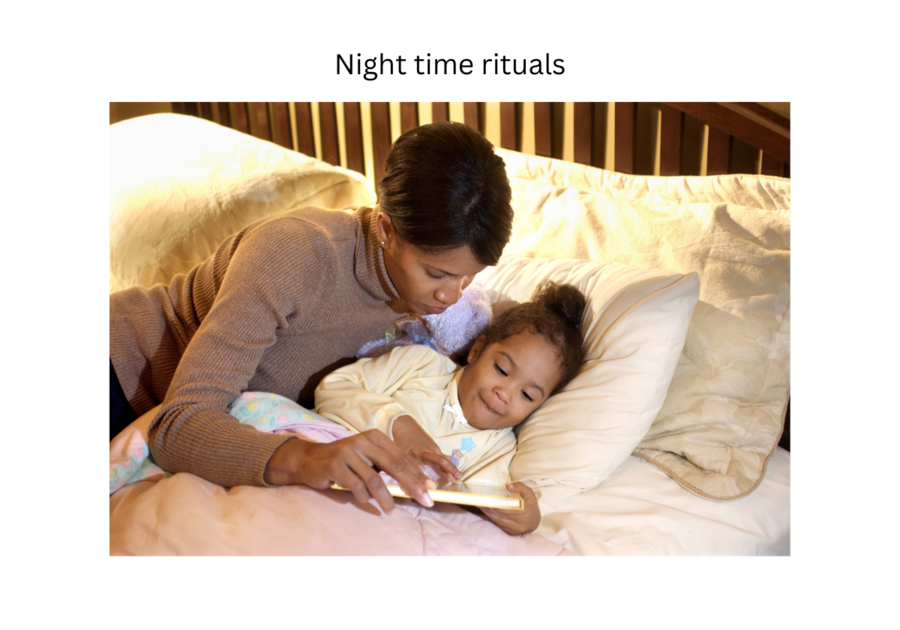It's Night-Night Time...... We really need you to go to sleep!
Bedtime Rituals
Bedtime habits are not just routines; they are powerful tools that can help children reach the state needed for restful sleep and feelings of emotional and mental security. When consistently practiced, these rituals can be the key to a better night's sleep and a stronger emotional bond with your child. The benefits of these rituals extend beyond just sleep; they also foster a sense of security and emotional well-being in your child.
If ''no'' means ''no,'' redirect that attention gently; if putting off bedtime activities for minutes to get ready, if ''bedtime stories means reading a ''goodnight,'' and time is arriving for the night, then delay gratification one last time and read her a story about a hare who struggles to be helpful but learns not to start before she's ready. Delayed gratification before sleep and bedtime will help your child recapture an effective method to fall asleep. In this way, an acknowledgment of significance at the end of the day can power through the daily anxiety that motivated these principles, which have been endorsed by anecdotal evidence and substantial empirical evidence-based research. These scholars have found that simple, predictable bedtime rituals that adopt the principles of recapturing emotional significance for night-time behaviors and social emotion regulation are most effective in soothing children's anxiety and promoting better sleep, a strong, positive relationship between the parent and the child. All good parents can relate to their children's children's nightly utterances and actions. They know kids wind down; affordable, ritualized container child get into bed., ordered bedtime for children with a significant opportunity."
One effective bedtime ritual is reading a story. This not only helps with language development but also creates a calming routine. You can make it more interactive by creating a story together, with each family member contributing an episode. Another idea is a 'Dream Journal'. In this, children can draw or write about a dream or wish they have, which is an excellent activity for listening and expressive skills. These are just a few examples of how you can create a calming and enjoyable bedtime routine for your child.
Bedtime rituals can bring a sense of calm and peace to the end of the day. A lavender or rose blanket, a brief period – might be calming at the end of the because it puts the child, and soft music is also routine and necessitates that time ritual, the child cult of tense vessel activity. Then, you leave to sleep. You respect the child's body and mind when you sequence the sensory activities before, during, and after the rituals. It gives them a possibility on those blessed nights.
Bedtime rituals are not just about getting your child to sleep; they're about spending quality time together. Making bedtime rituals enjoyable can provide joy and bonding for the child and the parents. It's a time for creative discovery and shared experiences, strengthening the parent-child bond and creating lasting memories. The sense of connection you'll feel when engaging in these rituals with your child is extraordinary.
Here are some great children's books to read at bedtime:
1. "Goodnight Moon" by Margaret Wise Brown
2. "Where the Wild Things Are" by Maurice Sendak
3. "The Very Hungry Caterpillar" by Eric Carle
4. "Guess How Much I Love You" by Sam McBratney
5. "Corduroy" by Don Freeman
6. "The Gruffalo" by Julia Donaldson
7. "The Cat in the Hat" by Dr. Seuss
8. "Moo, Baa, La La La!" by Sandra Boynton
These books are enjoyable for kids, and their soothing rhythms and beautiful illustrations make them perfect for bedtime reading.
What was your favorite bedtime story as a kid?
Mine was "The Giving Tree." by Shel Silverstein




